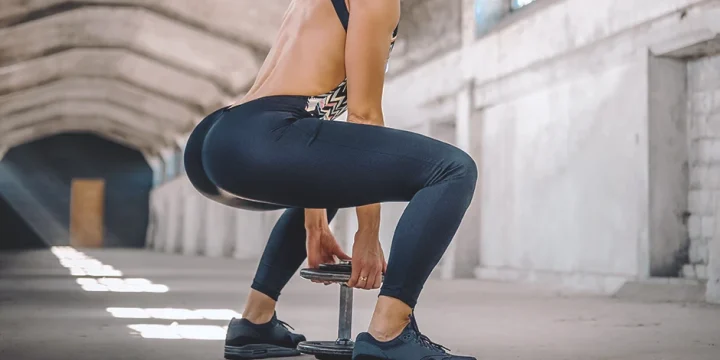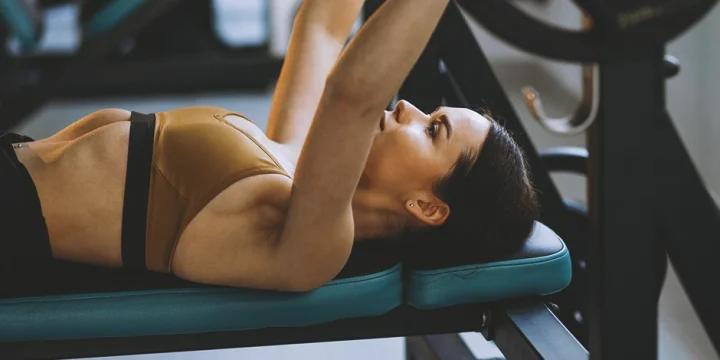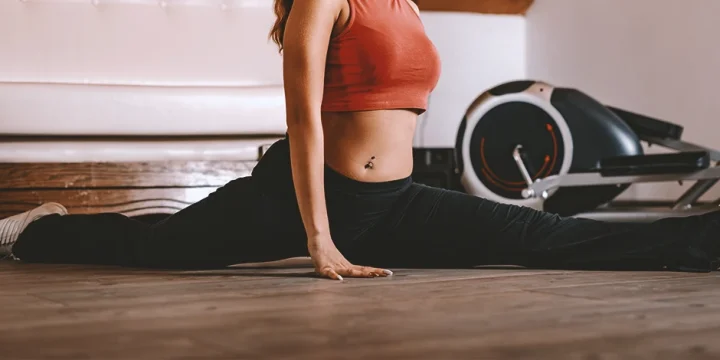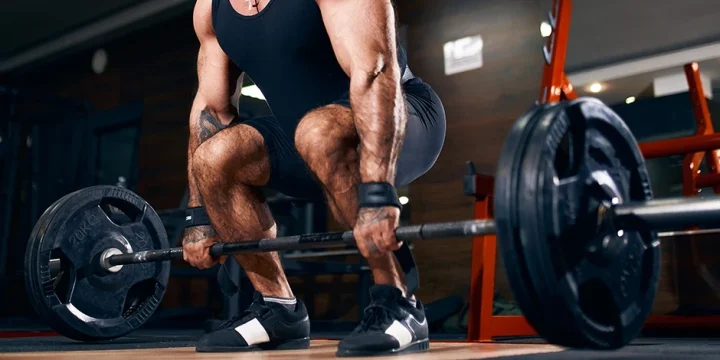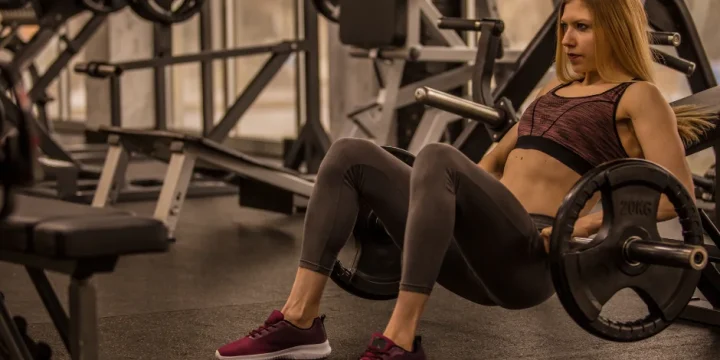Practically any exercise movement that involves your legs will trigger the hip abductors to some extent.
And as a certified personal trainer and strength conditioning coach, I’ve seen many people run into issues because they haven’t regularly focused on hip abduction exercises.
So, our team of personal trainers got together, and we had seven clients help out with testing the effectiveness of different exercises.
After four weeks of testing, we came up with a list of the best exercises that you should start adding to your lower-body workouts.
Here’s what we found.
Quick Summary
- Hip abduction exercises like side leg raises, lunges, curtsy lunges, step-ups, ISO squats, and deadlifts are just a few of the ways you can strengthen this midsection of your body.
- When you train your hip abductors the right way, you can also strengthen your gluteus medius and gluteus minimus.
- According to the National Institute of Health, sedentary lifestyles can lead to weakened hip abductors, impacting overall muscle strength and stability.
- In my experience, I've found that incorporating these exercises can significantly improve clients' balance, stability, and overall lower body strength.
10 Best Hip Abductor Workouts

There are several different types of movements you want to introduce into your-lower body workouts in order to properly target the hip abductor muscles.
Some gyms might have a hip abduction machine, but I would actually recommend that you try the following instead.
“The hip abductors are closely related to the core muscles and are crucial for balance and athletic activity.” - Gregory Minnis, DPT, Physical Therapy
Choose two of these for each leg workout day and see how quickly this will make a difference.
Fire Hydrants
The weird name will make a lot more sense if you picture an urban dog going about its marking habits.
Here is how to do the fire hydrants:
- Roll out your preferred exercise mat and get on all fours with your hands under your shoulders and knees under your hips.
- Keep your knee joint at a right angle and raise one leg up to the side as far as you can.
- Slowly lower the leg back down and repeat 15 to 20 times before switching to the other leg.
Side Plank
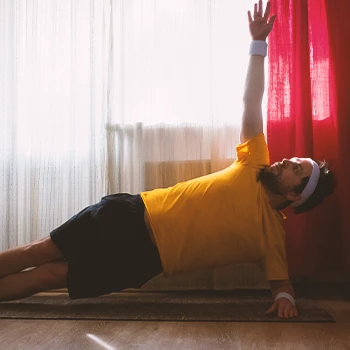
I often tell my clients that this is a more challenging method to target the hip abductors, and it will require some practice to master their balance.
I’ll also have a slight variation at the end:
- Get into the starting position by lying on your left side and raising your upper body by leaning on your elbow.
- Now lift up your upper thigh bone and hip joint until your body is in a perfectly straight line.
- From here, slowly raise your right leg up and make sure that you keep both legs straight.
- Slowly return to the starting position and repeat 10 to 15 times before switching to the other leg.
- To make this one tougher, raise your upper body further off the ground by supporting your weight on your hand rather than your elbow.
Clamshells
According to OrthoInfo, clamshell exercises are one of the easier hip abduction workouts you can do, and they are particularly helpful for people with hip or lower back injuries [1].
Here’s what you do:
- Lay down on your left side while leaning on your elbow.
- Bend your legs and keep your knee joints and ankles together.
- Now, raise your right knee while keeping your angles together.
- Slowly return to the starting point and repeat the movement 20 to 30 times before switching to the other side.
ISO Squats
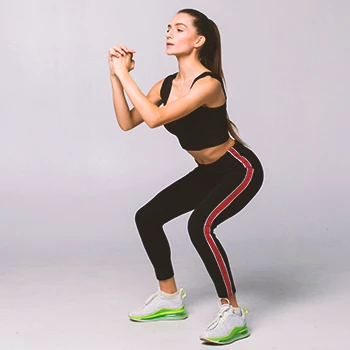
This is a unique squat movement that won’t bring you all the way down, and it’s ideal for people who might have knee pain.
Start with these instructions:
- Stand with your feet shoulder-width apart and a slight bend in your knees.
- Lower your buttocks down as if you’re about to sit on a chair, but stop before your knees are at a right angle.
- Now, move both knees outward, like in the clamshell movement and feel how this adds a bit more strain to your hip abductors.
- Repeat the movement about 20 times for one set.
Banded Side Step
As a trainer, I recommend using a looped resistance band for this exercise and, ideally, having about three or four different ones to adjust the resistance perfectly for your training needs.
Here’s what to do:
- Stand straight with your feet together and a band looped around your ankles like a figure of eight.
- To start the hip abduction, step your left leg out as far as you can and make sure you start slowly.
- Then bring the leg back to the center and to your right foot.
- Then step out to the right in the same way and alternate each side for 15 to 20 reps.
Side Leg Raises
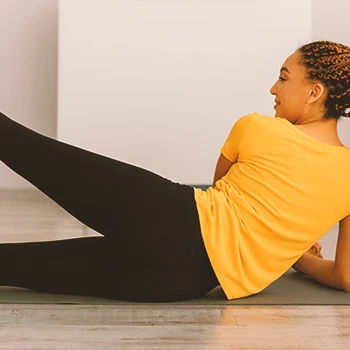
We’re heading back to the floor to work on your hip abductors, and this is a good exercise if you have weak hips and lack the balance for side planks.
This is the movement:
- Lay down on your side with both legs straight in the starting position.
- Slowly lift the top leg up as far as you can and hold it there for a second.
- Lower the leg back down and repeat this movement 15 times.
- Then switch around with the left side as your top leg.
Step-Ups
This is an excellent workout routine to also engage your gluteal muscles in your buttocks:
- Stand in front of a solid bench or step-up platform that is at least a foot off the ground.
- Lift your left foot up and place it on the bench.
- Now push your whole body up until you’re standing on the bench.
- Then slowly lower yourself back down again, feeling the hip abductors fully engage the more your left knee bends.
Chair Hip Abduction
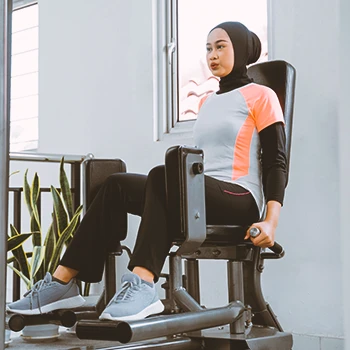
This is actually a great way to do some hip abduction while you’re sitting at a desk:
- The starting position is seated on the edge of a chair with your knees at a right angle and your hands on your hips.
- Now move your knees as far apart as possible without getting your feet off the ground.
- Then bring them back together in a clamshell-like movement.
- You can also use bands for this by looping them around your lower thighs for added hip strength.
Curtsy Lunge
Curtsy lunge is another great way to activate the gluteus medius while doing hip abduction training:
- Stand with your feet hip-width apart.
- Now lean forward slightly and bring your right foot behind your left leg.
- Push the right foot out as far as you can and bend your left knee.
- Get down as far as you can until your right knee is close to the ground.
Deadlifts
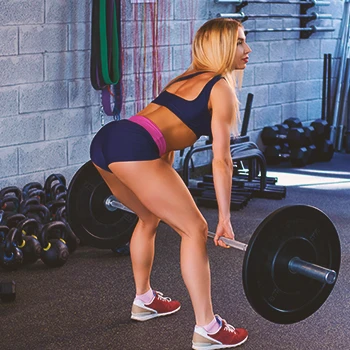
And the final exercise for weak hip abductors is a banded version of the deadlift:
- Loop a resistance band under your feet and stand with your knees bent just slightly.
- Bend your body forward and reach with your hands for each end of the band.
- Now pull yourself back up and feel the increasing resistance on the band as you stand taller.
Related Posts:
What Do Hip Abductors Do?

The hip abductor muscles play a key role in stabilizing the pelvis while walking and standing, as well as supporting the abduction and rotation of the hip joints.
Weakness in these muscles is quite common, even for performance athletes, and this can then reduce your ability to complete several lower body and core exercises at a higher performance level.
According to the National Institute of Health (NIH), these muscles engage when you work your upper leg muscles and the three muscles that make up your buttock (gluteus maximus, gluteus medius, and gluteus minimus) [2].
And it is this interaction that can become a limiting factor for things like deadlifts and squats.
“Hip abduction is a simple movement that can strengthen the buttocks and outer thighs.” - Chelsea Evers, NASM-CPT
I often observe that a major issue for many of my clients is the underuse of certain muscles due to their lifestyle. They typically spend a lot of time sitting, whether it's in a car, on public transport commuting to work, or at a desk all day.
According to the NIH, this kind of sedentary lifestyle then reduces strength in hip abductors and abdominal muscles [3].
And athletes who might be struggling to up their game for deadlifts and squats might find that some targeted stretching and strengthening of hip abductor muscles will build a more solid foundation for other exercises.
Benefits of Hip Abductors Exercises
- Enhances Stability and Balance: Hip abductor exercises strengthen the muscles that stabilize the pelvis, improving overall balance and coordination, essential for daily activities and athletic performance.
- Reduces Risk of Knee Injuries: Strong hip abductors support knee alignment during movement, reducing the risk of injuries like ACL tears or knee pain, especially important for athletes and active individuals.
- Improves Walking and Running Efficiency: Strengthening the hip abductors enhances gait efficiency, leading to better performance in walking and running by promoting more effective movement patterns.
- Alleviates Lower Back Pain: Regular hip abductor exercises can alleviate lower back pain by correcting muscle imbalances and improving posture, especially for people with sedentary lifestyles.
- Aids in Injury Rehabilitation: These exercises are often used in rehabilitation programs to recover from hip, knee, or lower back injuries, helping to restore strength and mobility in the affected areas.
FAQs
What Is the Most Powerful Hip Abductor?
The gluteus medius is the most powerful and largest hip abductor muscle. It sits at the upper end of the thigh and outer buttocks, where it plays a key role in rotating and flexing the hip joint. Strengthening this area may also protect your hip joint better from wear.
Do Hip Abduction Exercises Help Grow Glutes?
Yes, some hip abduction exercises will help you grow your glute muscles as well. The more the movement involves pushing your body weight upwards, the more it will engage the gluteus medius and gluteus maximus.
Are Hip Abductor Exercises Worth It?
Yes, hip abductor exercises are worth it and should be part of regular workouts for athletes of all levels. These muscles build a strong foundation for many other types of exercises that involve moving your legs and hips.
How Many Times Should You Do Hip Abduction?
You should do two to three hip abductions at least twice a week to build up more strength. With our recommended exercises, you should also aim for, on average, 15 reps per set to ensure that you gain the necessary endurance and strength.
References:
- https://orthoinfo.aaos.org/en/recovery/hip-conditioning-program/
- https://www.ncbi.nlm.nih.gov/books/NBK538193/
- https://pubmed.ncbi.nlm.nih.gov/33188982/
About The Author
You May Also Like
